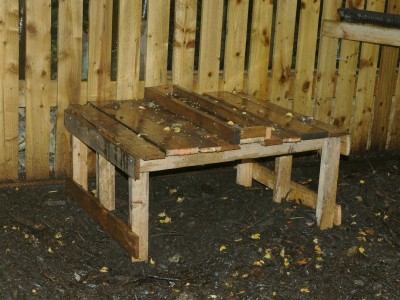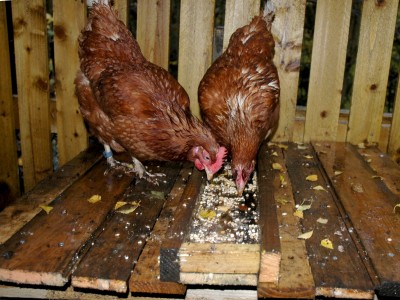Quick Spicy Tomato & Lentil Soup recipe
Spicy tomato and lentil soup is a great, hearty soup, which can be made quickly & simply – and from cheap, store cupboard items. As a result, it’s one of my favourite emergency soups when we need something quick and warming – it only takes about 30mins from start to finish.
The observant may notice a pattern with the things I cook. What can I say, we love spice-inspired endorphins. ;) Again though, like with the spicy butternut squash soup from a few weeks ago, for us, this is more flavourful than highly spiced – easy to add more for head-exploding spiciness though.
Quick spicy tomato & lentil soup
Yield: 6-8 decent size servings – a whole lot of soup!
Total cost: Using stuff from the store cupboard, but less than £2 overall
Ingredients:
1 onion – half finely diced, the other have a bit bigger
oil for frying
2 cloves of garlic (or equivalent puree)
3tsp cumin seeds
1 red pepper – finely diced (this is the only non-store cupboard item and is completely optional)
2 cans of chopped tomatoes
4tsp of tomato puree
2litres of hot vegetable stock
150g-200g of red lentils (depending on quite how thick you want it), rinsed
Spices:
2tsp ground coriander
2tsp mixed herbs
half tsp dried chilli flakes (or 1tsp of chilli powder)
salt + pepper to taste
2 bay leaves
Chicken shelter from two old pallets
I finally built my long-awaited shelter for the chicken run on Saturday – hurrah! It will provide more stomping space (since they can stomp around underneath and on top), more shelter for the rain and somewhere sheltered to hang another drinker.
My original plan had been very fancy – involving a sloped solid platform (to be a shelter, with the water draining into a mini-gutter) topped with perches. The actual version is simpler – two small pallets (about half the size of normal pallet), one cut in half to be the legs, one left intact to be the platform, then finished off with scrap wood.
Since I was using already pretty solid pallets, it came together really quickly – three little bits of sawing (through the support struts of the pallet to be the legs) and a few screws, and I had a strong platform, which I could use as a work bench for cutting the scrap planks to size.
The raised bit in the middle has three purposes:
1) I couldn’t find any wood to fit the gap between the two middle slats – everything was either just too big or way too small – so I fitted a too-big piece across the top (it’s supported underneath by some little pieces on the support joists);
2) The raised sides are a bit narrow for the purpose really but could be perched on if a chicken felt that way inclined; and,
3) It gives a neat bribery trough for corn and similar treats.
It’s a little low really — they can get under there and stand up, but not stretch properly.
But I’m really glad I made this one – it showed me how easy it was and because it was smaller, it was easier for me to manage on my own without having resort to Long-Armed John’s assistance. It’s a useful prototype really – and aside from the cost of a few screws, completely free!
I’m going to make another version with two full sizes pallets next weekend – that should be more than tall enough for them. Once I’ve made that, I’m going to secure more perches going to and from the platforms and their existing perches so they can play “floor is hot lava” around the run :)
Read MoreLearning patience from wild food (and veg growing)
 As I said in my post about our fungi forage last weekend, that walk taught me to confidently identify about half a dozen wild mushroom species, and the wild food walk we did in the early summer taught me how to identify another half dozen things, mostly green leaves. These built on things I’d learnt how to identify myself and the obvious things that we all know (nettles, dandelions, blackberries etc). So after a couple of years of being interested in wild food, I can identify maybe 25 things with enough confidence to eat them. That’s not exactly that many when you consider the variety of stuff out there.
As I said in my post about our fungi forage last weekend, that walk taught me to confidently identify about half a dozen wild mushroom species, and the wild food walk we did in the early summer taught me how to identify another half dozen things, mostly green leaves. These built on things I’d learnt how to identify myself and the obvious things that we all know (nettles, dandelions, blackberries etc). So after a couple of years of being interested in wild food, I can identify maybe 25 things with enough confidence to eat them. That’s not exactly that many when you consider the variety of stuff out there.
When I want to learn a new craft or a new way to cook or bake something, I tend to grind it – a video game term for doing some repetitive task/quest over and over again in order to “level up” as quickly as possible so you can go onto more exciting things. When I was figuring out my (lazy) way to make slow rise no knead bread, I made it every other day for a fortnight. By the end of it, I was knocking out perfect, uniform loaves without much effort at all. By grinding it, I can quickly learn from my mistakes and don’t ever get stuck in a “it didn’t work last time, I don’t want to try again” slump.
But I can’t grind wild food. Nature won’t let me grind. It won’t let me focus on finding just one type of thing at any given time. I have to learn by its schedule and its randomness, an enforced slow learning curve.
Growing things in our garden is possible even worse. I’ve usually got a couple of months to collect and experiment with different wild plants before they go out of season, but I have, by and large, got one shot at growing things each year. If I miss the narrow sowing window or my seedlings die a few days after transplanting, that’s pretty much it – I have to wait a year to try again.
I always feel a bit sad when each wild food window closes – but I suspect it’s good for me to have these limitations in part of my life. It’ll teach me patience and there is nearly always something new to move onto finding or planting. I can continue reading about boletes & russulas and tomato seed varieties & manual pollination techniques over the winter – grinding the theory – but I have to wait until next year to continue the practical work.
After three decades of flitting from one thing to another fractionally more exciting thing, I think developing the skills of patience and sustained year-on-year learning is as important for me and my sustainable living as being able to tell the difference between a death cap and field mushroom. I just wish I’d started earlier ;)
Read MoreHow I cut our gas bill in half with one phone call
 Recently, we got a letter from our utility company.
Recently, we got a letter from our utility company.
As a result of your latest annual review, it said, your monthly payments will increase to by £5 to £70 a month. I gasped – £70 a month!?
I realise an increase by a fiver isn’t much in this day and age – but the original £65 was higher than it should have been (we’d underpaid when we first moved in so overpaid over the summer to make up for it). I’d been hoping for it to drop when everything levelled out, not raise further.
John and I were in disbelief about it. We didn’t think we used that much gas. Sure, it powers our heating, our hot water and our cooker hob, but the oven is electric and so is the shower. We mostly shower rather than have baths so don’t use much gas-heated hot water at all. Even though we work from home and have a high-ceilinged draughty house, we hardly over-use the central heating – we prefer to use our woodburning stoves for heat when we’re in the living room or office, and only used the central heating last year when we were in other parts of the house – with the thermostat at 15C/60F and only programmed to come on at certain times of day (and certainly never at night). We wear layers and use animals as hot water bottles.
We weren’t sure how much we could cut back – maybe rely on the stoves more (although we’d obviously need more wood than we’d planned for to do that), wear more layers, get more animals… John accepted that his nasty habit of turning on the hot tap to rinse things (but turning it off again before the hot water started) needed to stop and I worried how much energy we’d used cooking jams and long-time-on-the-hob stews, curries and pasta sauces. Even with my recent drop in income, we weren’t particularly concerned about the extra fiver – we wouldn’t have to be selling any kidneys to cover it – but we were worried about how much it was costing compared to how little we were using. What if we did need to start using the heating more? How much would it cost us then? And what’s the going rate for a one-careful-owner kidney these days?
Then I decided to do some maths. I collected together all the year’s bills and counted up how many units of gas we’d actually used. I also made sure that our bills were being worked out on actual meter readings and not estimates – they were. Then I made the phone call I mention in the title.
I explained the situation to the woman on the end of the phone. I explained that I was happy to accept that I’d done something wrong in my calculations but according to my figures, we should be paying substantially less than the £70 they’d proposed. With a bit of rounding up, I thought it should be closer to £40 a month.
She put me on hold and did the maths herself. Then she put me on hold again and got her manager to do the maths. They both worked out it should have been £32 a month. We settled on £35 a month to give us a bit of leeway in case it’s a cold winter and the dog doesn’t perform her feet heating task as well as desired.
She said she couldn’t understand where the £70 a month had come from – it just didn’t make any sense when you looked at the figures.
I suspect the power company don’t actually do any counting during the automated “annual review” process and just put everyone’s bill up a little bit – an amount not many people will notice – because every extra pound that our accounts are in credit will be money in their bank account making interest for them. Sure, that money is still technically mine and I’d be able to use it against future power purchasing, but I’d much rather it was earning interest for me, not them!
The episode has made me more keen than ever to get our paperwork in better order and to keep taking monthly meter readings for my own interest – if we suddenly start using more of something, it will be nicer to be able to spot it earlier rather than waiting for the quarter-and-then-some bills. I’m also definitely going to be checking all future bills incredibly carefully.
Read MoreUpcycle an old duvet cover into a frugal bean bag
(Is it just me or does “frugal bean bag” sound like a filthy euphemism? … It’s just me, isn’t it?)
As I mentioned in passing last week during my quick week-off updates, I made a bean bag from some old bedding.
We wanted a fairly sizeable beanbag for the animals to sit on in front of the stove in the office. We wanted one that could be a flat mattress (since that would suit the dog best) but also be pulled up on its side to be a taller seat for us when we needed extra seating. I also wanted one that had an inner liner and a washable cover because, well, everything has to be machine washable in this house.
Perhaps I was looking in the wrong places but my my, big beanbags with liners are expensive! In shops, they were either tiny, unlined or unwashable pleather/suede, or all three. On one website, which was recommended by a friend, it was looking like I’d have to pay about £80 for a beanbag to match my wants – £80! For a bean bag!! GAH!!! So I decided to make my own.
It’s essentially a giant square cushion covered with a removable pillow slip case – but I’ve explained how I made it below.
Read More







